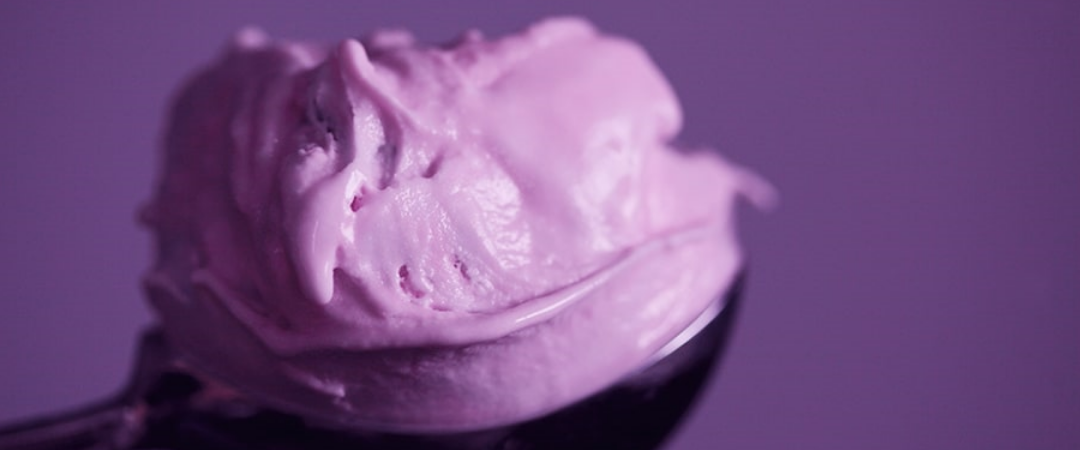Ube or purple yam is a tuber crop that can be white or purple in color. It is predominantly cultivated in South East Asian counties. In the Philippines, there are different kinds of ube depending on its origin according to the Philippine Department of Agriculture’s Bureau of Plant Industries:
- Cream White Ube – Bohol
- Purple Ube – Zambales
- Basco Ube – White Cortex with Purple Flesh
- Kinampay – Queen of Philippine
Ube is a cherished Filipino ingredient more popularly used to make halaya or jam. It is also used to flavor cakes, ice cream, bread, and other pastries.
My fascination with ube started at a very young age. I still remember the rush I felt when I heard the bell of the local ice cream vendor. I would shout, “Ice cream!!” so my lola would know it’s time to give me 10 pesos for a cone of ube sorbetes (traditional Filipino hand churned ice cream). I also remember the times my tito made ube halaya for the holidays. My family would eat it as a dessert on its own or sometimes, on top of halo-halo. I always looked forward to the next day, knowing we’d be using it as a palaman or filling for hot pan de sal as breakfast. It pairs very well with my morning coffee.
After years of watching my tito make this creamy and delicious confection, one day, I finally decided to offer my assistance in making ube halaya. I instantly regretted my decision. Eating the yummy ube halaya was one thing; making it was most definitely another matter. I only realized then the amount of effort and time required to reduce the ube mixture to form the halaya’s thick and creamy texture that we know and love. When I got to taste the result of my hard work, I forgot my initial regret and just felt happiness and accomplishment. To say that the process of cooking ube halaya is a labor of love is an understatement! Who would have thought that ube, in its ugly-looking raw form could turn into something this delicious? Just like potatoes, on its own, it doesn’t deliver much gastronomic excitement. However, when they are cooked, they are starchy and earthy with a hint of sweetness like subtle vanilla that deserves more admiration and respect.
For me, ube is not just comfort food. It’s forever glazed with fond memories of home.
Ube can be used to flavor a wide variety of sweets or pastries, some of which I have already mentioned above. Interestingly, it’s rarely used for savory dishes. I guess you can leave that to taros, potatoes, or camote (sweet potato).
Here’s a list of the delicacies you can create with ube (bookmark this page as I’ll keep this updated):
- Ube halaya
- Ube ice cream
- Ube crepe
- Ube ukoy
- Ube lumpia
- Ube pan de sal
- Ube puto
- Ube macapuno cake
- Ube cupcake
- Ube cheesecake
- Ube otap
- Ube pastillas
- Ube hopia
- Ube donut
- Ube pizza crust
- Ube waffles
- Ube pancakes
- Halo-halo with ube halaya
- Halo-halo with ube ice cream
- Ube cookies
- Blueberry Ube tarts
- Puto Ube
- Ube Lecheflan
In Dubai, it’s difficult to find fresh ube tuber. Baqer Moehbi and Lulu Hypermarket are the two supermarkets that regularly supply these. Occasionally, West Zone and Al Maya has, as well. For an extended shelf life, Ube is commonly processed and sold in three forms:
- Bottled ube halaya – an imported product from the Philippines
- Liquid Ube extract – can be added to pastries to give ube’s distinct taste and color.
- Ube powder – pulverized dried ube, which can also be added to pastries for flavor and color.
While Ube has been a popular ingredient in Filipino cuisine, it has only reached international recognition back in 2016 when it was featured as the main ingredient for the 24-karat gold Cristal donut in Brooklyn. In the Philippines, Ube is once again rising in prominence due to the popularity of the Ube Cheese Pan de Sal. It’s basically ube pan de sal filled with creamy ube halaya and cheddar cheese. I read somewhere that Ube will be one of the food trends for 2020 (assuming we all survive this pandemic).
We tried our hand in recreating this Ube Cheese Pan de Sal using cream cheese instead of cheddar cheese. We also made use of tanzong for a softer pan de sal. You can find the recipe here.
You may also try ube in its simplest and purest form of dessert, which is the Ube Halaya. You can find my family’s recipe here.

